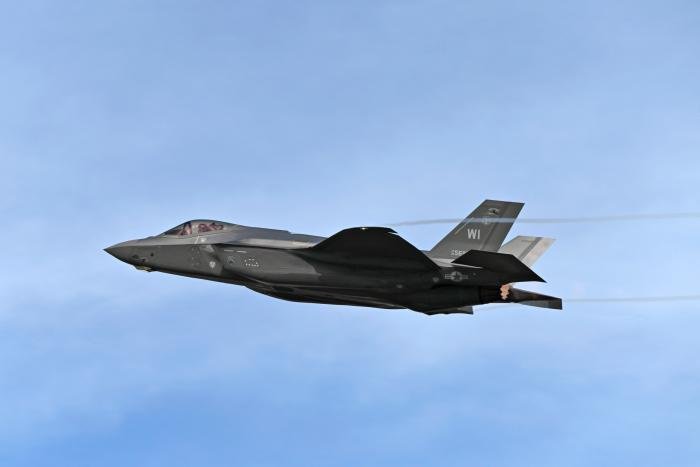A number of F-35A Lightning IIs and more than 150 airmen from the Wisconsin Air National Guard’s (ANG’s) 115th Fighter Wing (FW) – which is home-based at Truax Field ANGB in Madison – completed the Weapons System Evaluation Program’s (WSEP’s) Exercise Combat Archer at Tyndall AFB, Florida, on February 23.
The exercise marked the first training deployment for the 115th FW’s new F-35A Lightning II fifth-generation multi-role stealth fighter fleet, providing both air and ground crew personnel with experience in handling and firing live air-to-air weapons.

Commenting on the deployment, Capt Alexander Abbott – the 115th FW’s project officer for WSEP 24.05 – said: “WSEP is a formal evaluation of a unit’s ability to conduct air-to-air live fire missions. Beyond evaluation, live-fire air-to-air experience against threat-representative targets boosts confidence and provides critical feedback to the unit and missile engineers.”
Combat Archer also provided the Truax Field-based F-35A pilots with the opportunity to practice the tactical departure techniques used in high-threat environments. According to Lt Col Michael Koob, commander of the 115th FW’s 176th Fighter Squadron (FS) ‘Badger Air Militia’, such high-speed take-offs are essential for pilots to rapidly reach a safe ejection altitude while minimising air-to-ground threats. “We want to get as high as fast as we can and that involves an afterburner take-off. In Madison, we don’t practice afterburner take-offs to minimise noise, resulting in take-offs that look more like an airline departure.”
The two-week exercise also allowed both full-time and traditional guardsmen with an opportunity to complete a deployment simulation from beginning to end. “This two-week exercise is no different than if we were to go overseas. We have to exercise that muscle every now and then to make sure we know how to get out the door when tasked to support worldwide contingencies,” Koob added.

